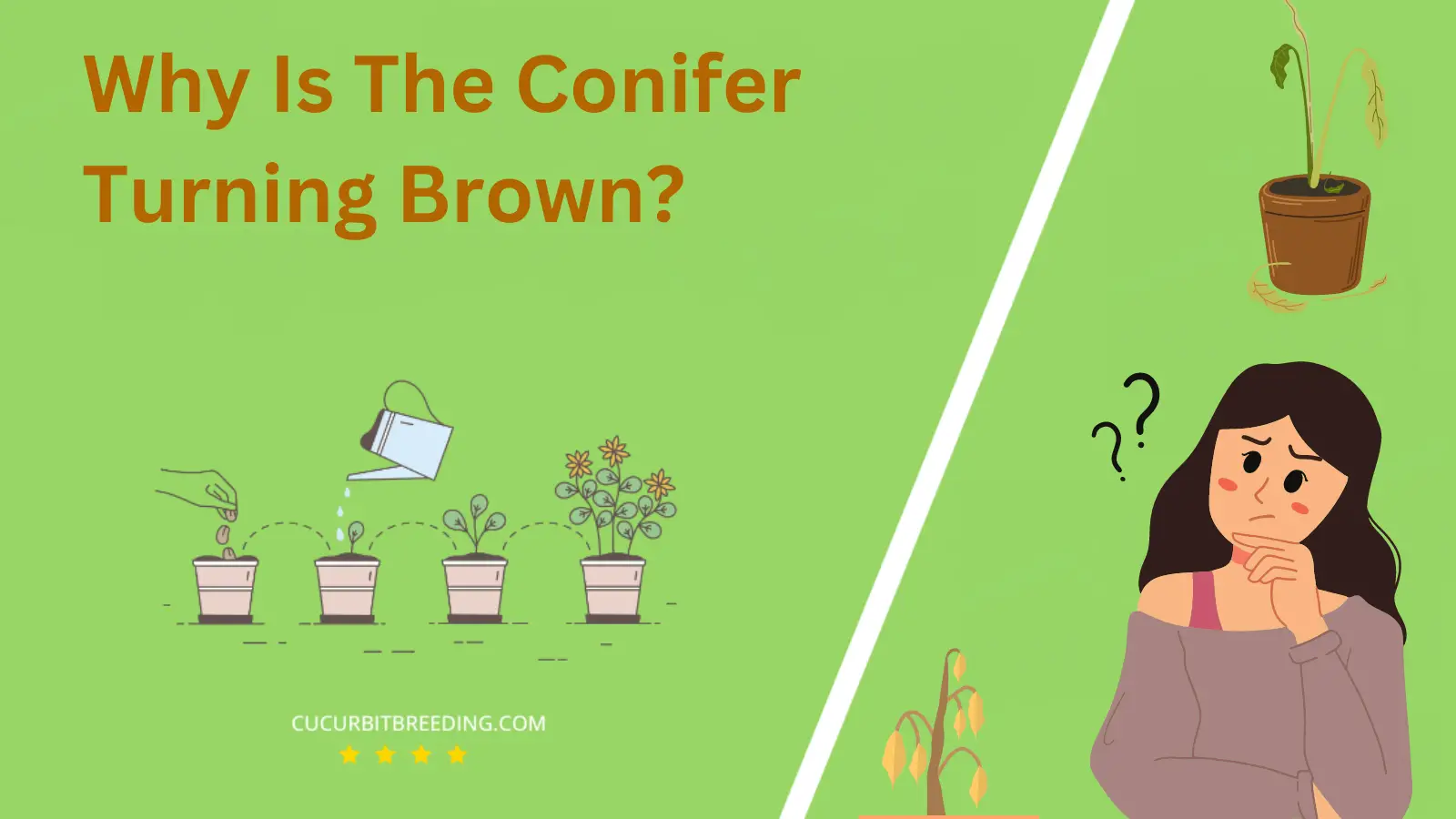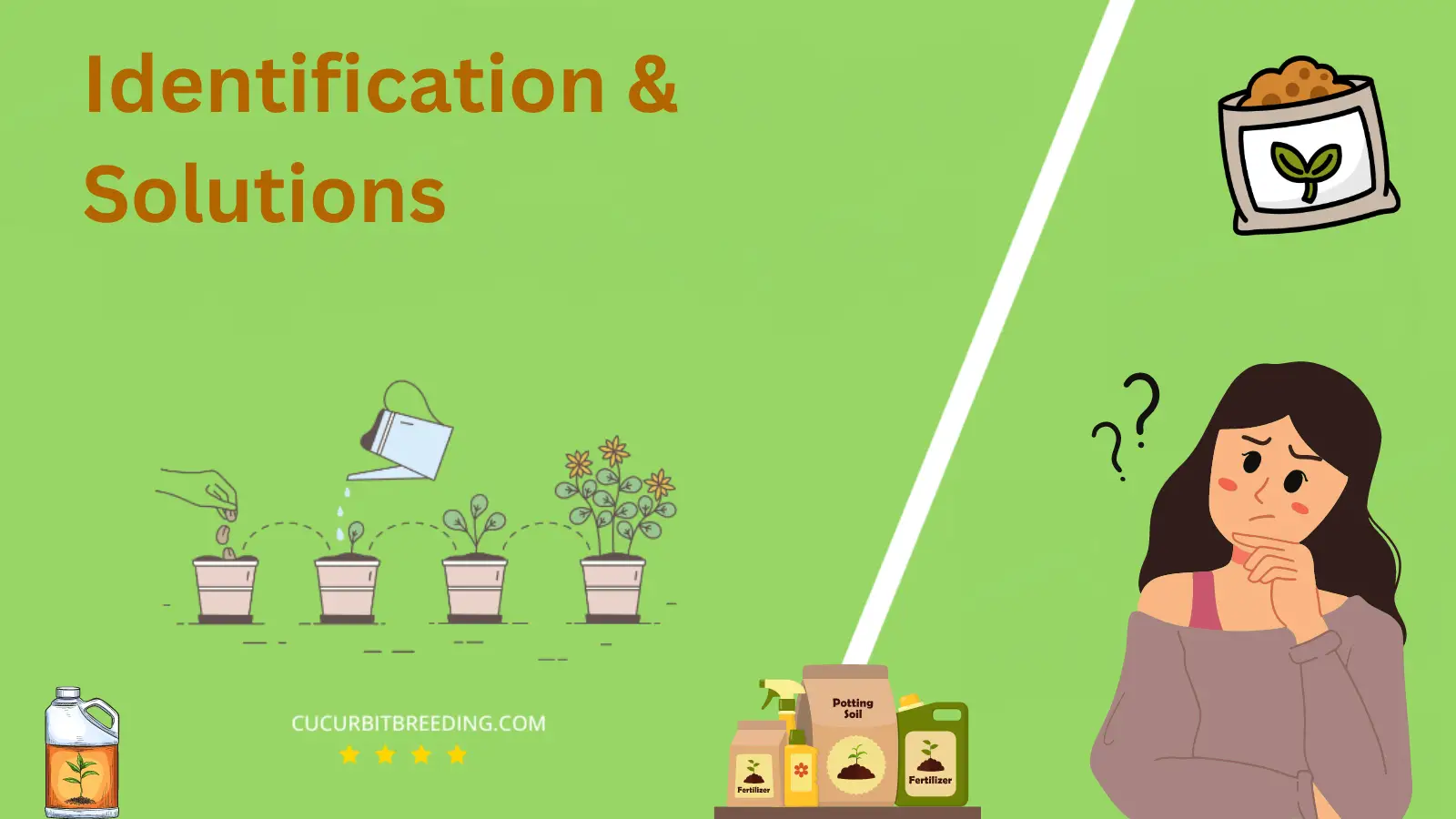
Nothing brings a touch of elegance to a garden quite like a hearty, thriving conifer. But what happens when this usually resilient tree begins to falter, its rich green needles traded for a worrisome brown? The discovery of a browning conifer can strike a chill into the heart of any dedicated gardener.
Armed with a keen eye and the appropriate knowledge, however, even this daunting challenge can be tackled successfully. Let’s prepare to dive deep into the world of conifers and their care.
Why Is The Conifer Turning Brown?
The browning of conifers can be associated with several reasons, such as lack of water, infestations, or diseases. Insufficient watering may lead to drought stress, causing the tree to turn brown. Pest infestations like bark beetles or spider mites can also cause browning, as they feed on the tree’s sap. Lastly, diseases like root rot or needle cast can turn your conifers brown. The exact reason might vary, and a closer examination might be necessary to determine the exact cause.
1. Drought
| Description | Lack of water causes the conifer’s leaves to turn brown due to dehydration stress on cells. |
|---|---|
| Solution | Increase watering frequency to prevent dehydration and maintain healthy green foliage. |
The reason the conifer is turning brown is due to drought. Drought conditions significantly impact plants by depriving them of the necessary water they need to thrive. Lack of water affects the conifer’s ability to carry out essential processes such as photosynthesis, leading to browning of the needles. Additionally, prolonged drought weakens the plant’s defense mechanisms, making it more susceptible to diseases and pests that further contribute to the browning.
To address this issue, it is crucial to ensure sufficient water supply for the conifer. Regularly watering the plant deeply and providing adequate irrigation during dry periods can help alleviate the effects of drought. Mulching the base of the conifer can also help retain moisture in the soil and reduce evaporation. Additionally, planting drought-tolerant conifer species or varieties that are better adapted to arid conditions can be a long-term solution. Monitoring the plant’s water needs and adjusting watering schedules accordingly is essential for maintaining its health and preventing further browning.
2. Fungal diseases
| Description | Excessive moisture disrupts root function, hindering nutrient absorption and causing leaf cells to die. |
|---|---|
| Solution | Apply a copper-based fungicide to prevent and treat fungal diseases causing conifer browning. |
The presence of fungal diseases can lead to the browning of conifer plants. Fungal infections often occur due to unfavorable environmental conditions such as high humidity or excessive moisture. These diseases can affect the overall health and appearance of the conifer, causing its needles or foliage to turn brown.
To address this issue, it is essential to promptly identify the specific fungal disease affecting the plant. Proper sanitation practices, such as removing and disposing of infected plant material, can help prevent the spread of the disease. Additionally, improving air circulation around the conifer by pruning neighboring plants and ensuring adequate spacing can reduce humidity levels, discouraging fungal growth.
Applying fungicides, specifically designed for the identified fungal disease, can also be an effective solution. It is crucial to follow the instructions provided by the manufacturer and apply the fungicide at the appropriate time to effectively control the disease and revive the conifer’s health.
3. Insect infestation
| Description | Insect infestation causes conifer leaves to turn brown due to feeding and nutrient depletion. |
|---|---|
| Solution | Apply insecticide to eliminate the insects causing the browning of the conifer. |
The conifer turning brown could be due to an insect infestation. When insects feed on the foliage of the conifer, they cause damage to the leaves and needles, which eventually leads to browning. This problem can affect the overall health and appearance of the plant, as the brown foliage indicates a decline in its vitality.
To address this issue, it is important to identify the specific insect species causing the infestation. Once identified, appropriate insecticides or biological controls can be used to eliminate the pests and prevent further damage. Regular monitoring and promptly treating any signs of infestation are essential to maintain the health and greenery of the conifer.
4. Environmental stress
| Description | Insect infestation causes conifer leaves to turn brown due to feeding and nutrient depletion. |
|---|---|
| Solution | Apply insecticide to eliminate the insects causing the browning of the conifer. |
Environmental stress can cause a conifer to turn brown. This stress can be caused by various factors such as drought, extreme temperatures, poor soil conditions, or air pollution.
When a conifer experiences environmental stress, it becomes difficult for the plant to absorb water and nutrients effectively. As a result, the needles of the conifer may start to turn brown and eventually die off.
To address this issue, it is crucial to identify and mitigate the specific environmental stressors affecting the plant. Providing adequate irrigation during dry periods can help alleviate drought stress. Implementing mulching techniques can aid in retaining moisture in the soil and regulating temperature. Additionally, improving soil conditions through proper fertilization and soil amendments can enhance the tree’s ability to absorb nutrients.
Lastly, reducing air pollution in the surrounding area can minimize the negative impact on the conifer’s health. By addressing these environmental stressors and implementing appropriate solutions, the conifer’s browning issue can be resolved.

5. Nutrient deficiencies
| Description | Apply insecticide to eliminate the insects causing the browning of the conifer. |
|---|---|
| Solution | Provide appropriate fertilization with a balanced mix of essential nutrients to prevent conifer turning brown. |
Nutrient deficiencies can cause conifers to turn brown. When a conifer lacks essential nutrients, it struggles to maintain its overall health and vitality, resulting in the browning of its needles or leaves. This problem can occur due to various reasons, such as poor soil quality, improper fertilization, or the plant’s inability to absorb nutrients effectively.
To address this issue, it is crucial to identify the specific nutrient deficiencies affecting the conifer. Conducting a soil test can provide valuable insights into the nutrient levels and pH balance of the soil. Based on the results, appropriate amendments can be made to improve the soil quality and nutrient availability. Additionally, implementing a regular fertilization schedule using a balanced fertilizer specifically formulated for conifers can help replenish the lacking nutrients. It is essential to follow the recommended dosage and application instructions to avoid overfertilization, which can further harm the plant.
Moreover, ensuring proper watering practices is essential for nutrient uptake. Consistently providing adequate moisture without overwatering will aid the conifer in absorbing nutrients efficiently. Mulching around the base of the plant can help retain soil moisture and regulate temperature, further supporting its nutrient absorption.
In some cases, certain nutrient deficiencies may require targeted treatments. For example, if the conifer lacks iron, the application of iron chelates or iron sulfate can help correct the deficiency. It is recommended to consult with a professional arborist or horticulturist to accurately diagnose the specific nutrient deficiencies and determine the appropriate treatment options. By addressing nutrient deficiencies effectively, the conifer can regain its healthy green color and thrive in its environment.
6. Winter damage
| Description | The freezing temperatures in winter can damage the cells in conifer leaves, causing them to turn brown. |
|---|---|
| Solution | Protect from cold temperatures with burlap covering to prevent desiccation and frost damage. |
The conifer turning brown could be due to winter damage. During winter, conifers are prone to various forms of stress, including desiccation, frost damage, and freezing temperatures. These factors can cause the needles of the conifer to turn brown.
To address the issue, it is important to provide proper winter protection for the conifer. One solution is to apply a layer of mulch around the base of the tree to insulate the roots and retain moisture. Additionally, watering the conifer adequately before the ground freezes can help prevent desiccation. Another solution is to wrap the conifer with burlap or a protective covering to shield it from harsh winds and extreme temperatures. Lastly, pruning any dead or damaged branches can promote healthier growth and prevent further browning. Implementing these solutions can help mitigate winter damage and promote the overall health of the conifer.
7. Root problems
| Description | Root problems can cause the leaf to turn brown due to inadequate water or nutrient uptake. |
|---|---|
| Solution | Improve drainage by adding organic matter to prevent root rot and ensure proper watering. |
The conifer turning brown could be due to root problems. When the roots of a conifer tree are not functioning properly, it can affect the overall health and appearance of the plant. One possible reason for root problems is inadequate drainage, which leads to waterlogged soil. This can suffocate the roots, preventing them from absorbing nutrients and oxygen effectively. Another potential cause is root rot, which occurs when the roots are infected by fungi or bacteria. This can weaken the roots and impair their ability to support the plant’s growth. Additionally, compacted soil or damage to the roots during transplanting can also contribute to root problems and result in browning of the conifer.
To address root problems and prevent the conifer from turning brown, several solutions can be implemented. Firstly, improving drainage is crucial. This can be achieved by ensuring the conifer is planted in well-draining soil or by creating drainage channels in the surrounding area to redirect excess water away from the roots. Regularly monitoring and adjusting watering practices is also important, avoiding both overwatering and underwatering. Furthermore, proper mulching around the base of the tree can help retain moisture and regulate soil temperature, promoting healthier root growth. In the case of root rot, applying a suitable fungicide can help control the infection and prevent further damage. Ensuring proper care during transplanting, such as avoiding root damage and providing adequate water and nutrients, can also aid in preventing root problems and maintaining the conifer’s health. By addressing these root-related issues and implementing appropriate solutions, the conifer can be saved from browning and regain its vitality.